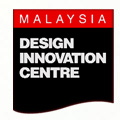Innovation to the mind of Tan Sri Lim Kok Wing, the founder and president of the Limkokwing University College of Creative Technology, is not merely about the hatching of new ideas or about simply creating new designs for products and services that will be on par with top global brands.
Rather he sees innovation as a way of life for Malaysians to attain developed nation status - where innovation becomes a mindset as in adopting an attitude of not simply accepting anything that comes our way but only choosing that which meets acceptable standards - standards that can only enhance our way of life, and in the process, raise Malaysian products and services to that of global standards.
“Innovativeness is part and parcel of the quality of life and must start with the demand for quality goods and services,” says Lim. He adds that while Malaysia has good and successful brands, they are comparatively few and there is a need for more brands.
Such has motivated Lim some three decades ago and he’s applying this philosophy through the Malaysia Design Innovation Centre (MDI) incorporated into the Limkokwing University College of Creative Technology (LUCT) at Cyberjaya.
The carefully designed and fully integrated campus today is showcasing the best of Malaysian products, through exhibitions and awards, while ensuring the thought processes that go into the design and innovation of these products are handed down to the student body through the curriculum as well as work assignments.
Lim has a fervent hope that with such exposure to the “Best of Malaysia”, the Malaysian mindset of accepting goods and services simply because they are cheaper, although inferior in quality, can eventually change to one where acceptance of such goods will depend solely on the quality and thus force manufacturers to adopt higher standards.
“Malaysian manufacturers still have the mindset to produce ‘substitute’ goods that are inferior, simply because they are cheaper (and thus easier to market),” Lim tells BizWeek in an interview. It is with these facets in mind that the MDI and university were integrated, resulting in a centre that will not only bring Malaysia’s leading brands together with inquiring minds but will also provide the resources and support necessary to further the ambitions and vision that may sprout, for both students and business alike.
The centre and university were launched by Prime Minister Datuk Seri Abdullah Ahmad Badawi on Oct 11.
Lim says students will learn that design is not simply a creative pursuit but one that involves aspects like the necessity for associated research in designing for a specific target market, for example, for a manufacturer trying to break into a specific segment of a market.
Lim says it is this aspect of design that many people, manufacturers included, do not appreciate. It is the power of research that enables the designer to suit the design according to the profile of a particular market segment or demand.
He adds that a designer cannot simply say “this is what I want” of a particular design as then the design would not be backed by the power of research. It is this kind of thinking insofar as the approach to design is encapsulated at LUCT, that Lim hopes will carry over to other design schools in Malaysia that have the capacity for research.
In Malaysia, Lim points out, appreciation for design is still at an insignificant state, when compared to overseas institutions where such appreciation is taught at the early stages, while the latter stages of a course are given over to design technology.
In western cultures, for example, Lim says people who add interest and value to life are celebrated - something that is not prevalent in this part of the world. “We must build that culture,” he adds.
Lim feels that it is within the “creative” environment of the campus that attitudes and links formed will someday result in such thinking.
With successful Malaysian brands like Bonia and Lewre, as well as corporations like Proton and Royal Selangor, participating in the Best of Malaysia Showcase currently on campus, the concept goes beyond mere exhibition and directly into an opportunity for students to truly experience the business reasons that go into successful innovation of ideas as well as physical design.
He refers to this as the “incubation” of ideas as students can actually work with professionals who have the knowledge of current trends and market demands and can guide students to translate ideas into practical and marketable designs.
Already up and running are viable business operations that require students to learn all facets of a business, be they ideas on creative menus or outlet aesthetics right through the administrative aspects including how to operate a successful franchise.
Integration is the key in campus, for not only are there business entities, plus the ones set up by the university itself, but all facilities are geared towards providing students with as much freedom of expression as possible such as the huge central plaza within which much of campus life is designed to revolve.
Here, even the food, menus and dining outlets are designed to involve student participation with aesthetics (read design), while a stage set to one side of the plaza enables students to give vent to musical or any other form of artistic expression during lunchtime.
So, it is as much an academic experience as a lifestyle one that students get to experience at LUCT. It is in this environment that Lim is confident the seeds of a new Malaysian society will take root and grow into one that will come to expect goods and services that are conversant with a forward looking and thriving nation.
“Everything is designed to encourage creativity,” says Lim, who points out that there is also the National Creativity & Innovation Award organised by the MDI to encourage manufacturers and service providers to compete globally with a seal of excellence for winners as an endorsement of quality.
With an environment designed to work both ways, which is to provide support and inspiration for students while providing support and resources for Malaysian companies, both big and small, the MDI and LUCT as an institution looks set to provide new meaning to creativity and Malaysian design aspirations.
“To be more competitive, we must be more innovative,” Lim says, and adds that the lead toward innovativeness must come from government encouragement while the media can and should recognise good designers as people who can make a difference by adding value to life.



